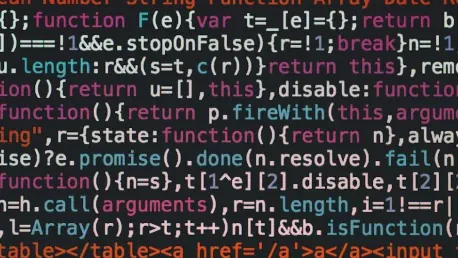The advent of generative artificial intelligence (AI) has revolutionized the creative and cultural sectors, offering unprecedented opportunities and posing significant challenges. As AI-generated content becomes more prevalent, the question of fair compensation for human creators has become increasingly urgent. Traditional copyright laws and economic models struggle to keep pace with these rapid technological advancements, necessitating a new framework to ensure equitable revenue distribution. This development prompts us to rethink the foundational elements of how copyright, revenue-sharing, and creator compensation should operate in the age of intelligent machines.
The Rise of Generative AI and Its Impact on Content Creation
Disruptive Innovations and Artistic Authenticity
Generative AI has the potential to transform content creation, but it also raises concerns about the substitution of human creators and the authenticity of artistic works. As AI-generated content becomes more sophisticated, distinguishing between human and machine-created works becomes increasingly difficult. This blurring of lines challenges the very essence of artistic authenticity and raises questions about the value of human creativity in an AI-dominated landscape. From paintings and music to literature, AI’s capabilities to mimic human creativity call into question the unique value traditionally placed on human artistic expression.
Moreover, the proliferation of AI-generated art amplifies fears regarding the erosion of artistic authenticity. As algorithms become adept at replicating styles and techniques, the unique touch of a human artist may be overshadowed by machine precision and adaptability. This shift could lead to a cultural landscape where the authenticity of artistic works is frequently questioned. The challenge, therefore, lies in finding ways to celebrate and preserve human creativity while acknowledging and integrating the contributions of AI in enriching the creative process.
Copyright Infringement and Legal Conflicts
The rise of generative AI has already led to numerous legal battles over copyright infringement. Intellectual property (IP) owners and AI developers are frequently at odds, with courts struggling to apply traditional copyright laws to AI-generated works. These legal conflicts highlight the inadequacies of existing frameworks and underscore the need for new regulations that address the unique challenges posed by AI. The ambiguity in authorship and ownership of AI-generated works complicates the enforcement of copyright laws, leading to contentious disputes in the legal arena.
Legal systems worldwide are grappling with how to categorize and protect AI-generated content. Traditional copyright laws are based on the notion of human authorship, making it difficult to fit AI-generated works into existing legal categories. This has resulted in a fragmented approach, with some jurisdictions attempting to extend copyright protection to AI-generated works, while others reject such extensions. The inconsistent application of copyright laws exacerbates the uncertainty and calls for a cohesive legal framework that can accommodate the complexities of AI-driven creativity.
The Economics of Digital Platforms and Content Valuation
Asymmetrical Dynamics Between Platforms and Creators
Digital platforms like Spotify, YouTube, and Google have immense power to shape industries and influence consumer behavior. However, the relationship between these platforms and content creators is often unequal. Platforms benefit from the vast array of content they host, while creators struggle to receive fair compensation for their contributions. This imbalance is particularly evident when platforms remove content, significantly impacting creators’ revenue and reach with minimal consequences for the platforms themselves. The asymmetry in power dynamics places content creators at a significant disadvantage, making it difficult for them to negotiate fair terms.
The economics of digital platforms tend to favor the platforms themselves, which rely on the aggregation and monetization of vast amounts of content. This model generates substantial revenue for the platforms through advertising, subscriptions, and data collection. However, the creators responsible for producing the content often receive only a fraction of the value they generate. This disparity is further accentuated by the lack of transparency in how revenues are distributed, leaving many creators uncertain about their true economic contribution to the platform’s success.
Two-Sided Market Structure and Market Concentration
The economics of digital platforms are characterized by a two-sided market structure, where platforms serve as intermediaries between content creators and consumers. This model often leads to market concentration, with a few dominant platforms controlling large segments of the creative industry. While this structure can enhance the reach of creative works, it also exacerbates the unequal relationships between platforms and creators, making it difficult to ensure fair compensation. The concentration of market power in the hands of a few platforms leads to monopolistic tendencies and reduces competition, ultimately disadvantaging creators.
The two-sided market model benefits platforms by creating economies of scale and network effects, where the value of the platform increases as more users and creators join. However, this often results in a win-lose scenario, where platforms gain market dominance and bargaining power, while creators face limited options and decreased bargaining power. To address this imbalance, it is essential to devise mechanisms that ensure fairer compensation for content creators, possibly through regulatory interventions or the development of alternative platforms that prioritize creator interests.
Challenges in Valuing Content on Digital Platforms
The News Industry and Compensation Disputes
The valuation of content is a significant challenge, particularly in the news industry. Publishers have long sought compensation from platforms like Google and Meta for featuring their content. However, the interconnected nature of these platforms makes it difficult to quantify the contribution of individual articles to their overall value. This complexity has led to ongoing disputes and varying legal outcomes across different jurisdictions. The lack of clear valuation metrics for content contributions hinders the development of fair compensation mechanisms for news publishers.
News content plays a crucial role in enhancing the relevance and utility of digital platforms, yet quantifying its exact value remains elusive. Platforms benefit from the engagement and traffic generated by news articles, but the financial benefits to the original publishers are often marginal. Legal battles over compensation have seen mixed outcomes, with some jurisdictions mandating payments to publishers, while others have seen platforms threaten to remove news content entirely. The ongoing struggle underscores the need for a transparent and equitable framework for valuing and compensating news content in the digital age.
Google’s Dual Role as Content Provider and Traffic Driver
Google’s dual role as both a content provider and a traffic driver further complicates efforts to determine the value of specific content. When users remain within the Google environment, the platform acts as a content provider, displaying excerpts in a way that makes individual contributions indistinct. Conversely, when users click through to the original publisher’s site, Google serves as a traffic driver. This duality blurs the lines of compensation and highlights the need for a new framework to address these complexities. The intertwining roles create challenges in establishing clear-cut compensation models that fairly reward content creators.
The dual role of platforms like Google can create tension between the platform’s interests and those of content creators. While aggregate traffic generated by a platform benefits from diverse content, individual publishers may struggle to capture fair value for their specific contributions. This creates a paradox where the platform prospers from content aggregation, yet the publishers face difficulties in extracting proportional financial value. Establishing a balanced approach to compensate content providers within this dual model demands innovative solutions and collaborative frameworks that can disentangle and appropriately reward individual contributions.
Towards a New Framework for Fair Compensation
The Need for a Novel Paradigm
The rise of generative AI and the dominance of digital platforms necessitate a new framework for fair compensation. Traditional copyright laws and economic models are inadequate for addressing the complex scenarios arising from AI-generated content and the platform economy. A novel paradigm must account for the intricate relationships between platforms and content providers, the layered contributions to platform value, and the equitable distribution of revenues. This new framework should balance the benefits of technological advancements with the protection of creators’ rights and interests.
In mapping out a new paradigm, policymakers must consider the multifaceted nature of content creation and the diverse ways in which digital platforms derive value. This calls for a holistic approach that incorporates legal protections, economic incentives, and ethical considerations. Developing this framework will require input from a broad range of stakeholders, including tech companies, creative professionals, legal experts, and regulatory bodies. The ultimate goal is to create a sustainable and just ecosystem that supports innovation while ensuring that creators are fairly compensated for their contributions.
Collaborative Efforts for Sustainable Solutions
The increasing prevalence of generative AI has underscored the pressing need for fair compensation for human creators as existing copyright laws and economic models lag behind technological advancements. This situation compels us to reconsider fundamental aspects of copyright, revenue-sharing, and creator compensation in the age of intelligent machines. Addressing these concerns is crucial to preserving the value of human creativity while embracing technological advancements. As we navigate this new landscape, we must aim to balance innovation with fairness, ensuring that the contributions of human creators are recognized and rewarded appropriately, even as AI continues to evolve and redefine the boundaries of the creative world.









